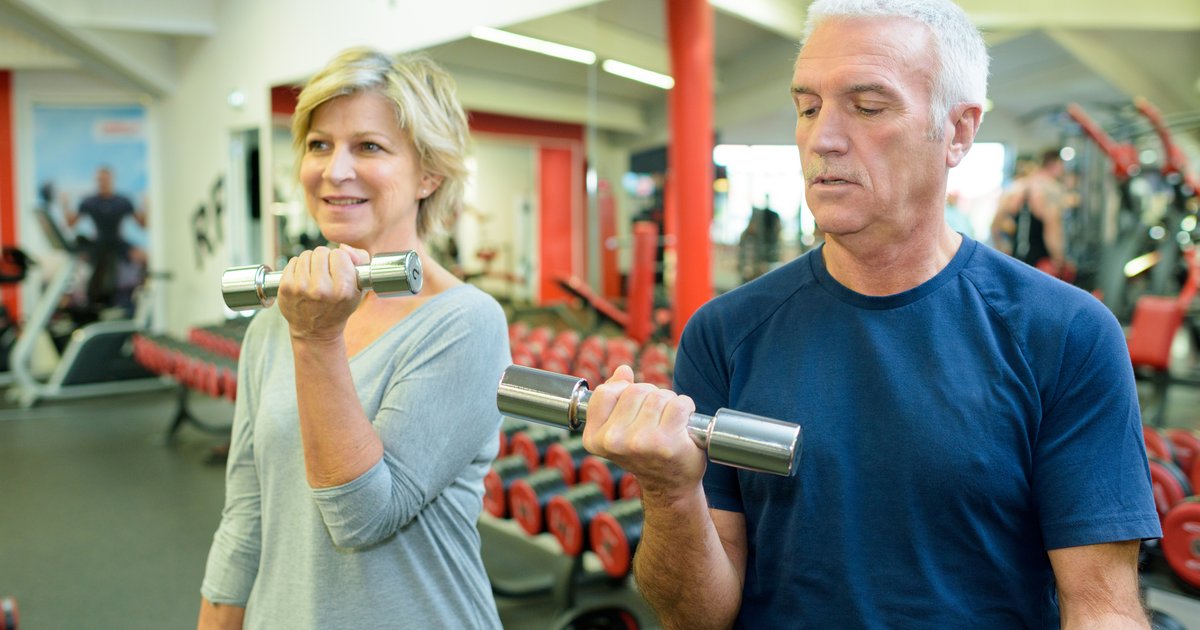Residents of this Wisconsin city are among the top five fittest in the U.S. in 2024

After heart transplant, Derek Lindstrom wants to run marathons again
Derek Lindstrom raced the biggest marathons in the country. After receiving a heart transplant he plans to run more marathons.
According to the World Health Organization, regular physical activity provides numerous significant physical and mental health benefits ― from cancer prevention to improved mental health and sleep.
In fact, the negative impacts of physical inactivity on the world’s public health care systems this decade are estimated to cost $27 billion per year if people do not become more active.
For the past 17 years, the American College of Sports Medicine’s American Fitness Index has ranked the 100 largest American cities based on over 30 fitness indicators ― including both citizens’ behaviors and each city’s fitness-related resources and infrastructure. In doing so, the Fitness Index determines America’s top “fittest cities” each year. ACSM’s 2024 rankings were released on July 23.
Wisconsin’s two largest cities, Milwaukee and Madison, ranked among the top 40 this year. Madison ranked fifth, and Milwaukee ranked 36th.
In addition to an overall ranking, each city was given a “personal health” and a “community and environment” rank. Personal health factors evaluated include exercise and sleep habits, fruit and vegetable consumption, and the prevalence of health conditions like asthma, heart disease and diabetes in a city. Community and environment factors include air quality, residents’ proximity to parks, walkability and a city’s number of physical activity spaces such as basketball hoops, playgrounds, recreation centers and swimming pools.
Here’s how Madison and Milwaukee earned their spots on the 2024 Fitness Index.
Madison is the fifth-fittest city in the US
Wisconsin’s capital city has moved up one spot in the Fitness Index rankings since last year. In fifth place, Madison is among the top overall fittest large cities in the U.S. in 2024. Madison ranked fifth for “personal health” and 16th for “community and environment” factors.
In terms of personal health, over 55% of Madisonians reported being in “excellent or very good health,” about 5% more than the report’s 100-city average. With a personal health score of 79, Madison comes close to Arlington’s score of 81, which earned the Virginia city its top spot.
Close to 85% of Madisonians reported exercising in the past month compared to about 78% of people across all 100 cities and almost 88% in first-place Arlington. More Madison residents meet the recommended aerobic and strength activity guidelines than the 100-city average.
Nearly 11% walk or bike to work, compared to 3.8% nationwide in the report. Additionally, Madisonians sleep more and smoke less than average. However, almost 49% reported “poor mental health in the previous month,” compared to 44.7% across all cities.
As for community and environment factors, Madison boasts the most playgrounds per 10,000 residents of any city in the report ― almost seven playgrounds per 10,000 people. The city has nearly 11 parks per 10,000 residents, and 95% of residents live within a 10-minute walk to a park, compared to about 71% study-wide. Madison also has more ball diamonds, basketball hoops and tennis courts per resident than average but fewer recreation centers and swimming pools.
Madison received a “bike score” of 65.5, about 13 points higher than the 100-city average of 52.3. The city also has one of the lowest percentages of residents struggling with food insecurity, about 6% compared to a study average of 10.4%. Fewer residents have obesity, asthma, high blood pressure, diabetes or stroke than the average, while the city’s rate of heart disease matches the 100-city average.
Milwaukee has risen seven spots in the Fitness Index since last year
Milwaukee’s Fitness Index ranking climbed from 43rd in 2023 to 36th this year. The city’s “personal health” ranking rose 11 points to 62nd, and Milwaukee retained its spot as the seventh-best city for “community and environment” fitness factors.
More Milwaukeeans reported biking, walking or taking public transportation to work than last year. The city’s air quality index improved from 64.9 to 72.7. However, over 38% of residents reported being in “poor physical health” in the previous month, compared to 34.5% in last year’s report.
About 49% reported being in “excellent or very good health” in the past month, about a percentage point less than the 100-city average. However, slightly fewer Milwaukeeans reported being in “poor mental health” in the past month than the study average.
Nearly 79% of Milwaukee residents said they’d exercised in the previous month, about the same as the 100-city average. However, Milwaukeeans consume fewer vegetables and smoke more than average. Additionally, more residents have obesity, asthma, high blood pressure and heart disease, but fewer have suffered from a stroke or diabetes.
When it comes to community and environment factors, nine in 10 Milwaukeeans live within a 10-minute walk of a park, nearly 20% more than the 100-city average. Milwaukee boasts about four parks and 2.6 playgrounds per 10,000 residents. The city received high walkability and bike scores, and fewer residents struggle with food insecurity than average.
Milwaukee also has more ball diamonds, basketball hoops, recreation centers, swimming pools and tennis courts per resident than the 100-city average.
What are the top 10 fittest cities in America?
Arlington, Va., earned the title of America’s “fittest city” for the seventh year in a row, also ranking number one for “community and environment” factors.
Arlington ranked first in four of the 34 fitness indicators. The city had the highest percentage of residents exercising in the previous month (87.8%), the most residents sleeping seven or more hours per night (76.4%), the lowest percentage of residents who smoke (3.4%) and the highest percentage of residents living within a 10-minute walk to a park (99%).
For the second year in a row, Washington, D.C., and Seattle, respectively, took the second and third spots in the Fitness Index. This was the first time the index’s top three did not change, ACSM reported.
Across the study, “we saw notable improvements in public transportation and biking/walking to work and park expenditures, denoting individuals who are more inclined to stay active and have better access to the resources to do so,” the Fitness Index said. However, the report noted that “food insecurity, mental health services and community design enabling increased physical activity” still need to be addressed in many communities.
Here are the top 10 fittest cities in America according to the 2024 Fitness Index:
- Arlington, Va.
- Washington, D.C.
- Seattle
- San Francisco
- Madison, Wis.
- Minneapolis
- Denver
- Atlanta
- Irvine, Calif.
- St. Paul, Minn.
Want to dive deeper into the data? You can compare any of the 100 cities and see how they scored on each of the 34 fitness indicators here: acsm.org/about/community-impact-programs/american-fitness-index/rankings.
More: Milwaukee ranks among the top cities in the country for equitable park access
More: This Wisconsin city is among the top 5 ‘happiest’ in America, a new study has found
Related
Neck Cloud Launches Cervical Traction Device For US Fitness Enthusiasts
A new cervical traction device is being launched in the US aimed at fitness enthusiasts, offering a safer, more affordable, and more convenie
How Hyrox Took Over New York – and the Rest…
Hyrox returns to New York this May for a follow-up to last year’s NYC event, which put the popular fitness race on the map in America When
Jane Fonda, Yoga and ‘Pumping Iron’: How the 1970s Changed…
“I think of women’s fitness history as B.J. and A.J. — Before Jane and After Jane,” Ken Alan, a kinesiologist who taught aerobics in the 1970s, said in
The American population is aging, and the fitness industry is…
When it comes to men and women over 50 who aspire to live healthy, 2025 could be a banner year. Why? Well, the numbers tell the story, and this year, more than













